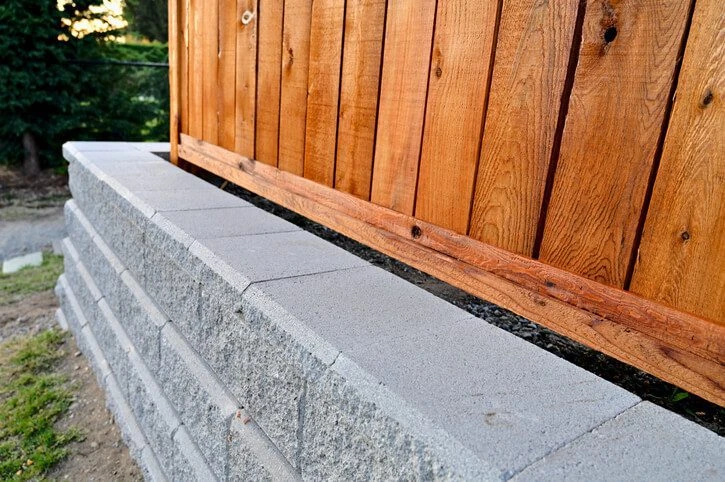Building your home on a slope allows you to maximize your use of space. With proper support underpinning your house, the soil stays in place and prevents slippage. It’s here that retaining wall contractors idea for sloped backyards can improve the look and functionality of your home.
Not only does a sloped retaining wall prevent soil runoff, but it also provides additional stability for the entire structure.
Retaining Wall Ideas for Steep Slopes
Ideas to Stabilize Steep Slopes
Building up stacked stone pieces is one of the top retaining wall ideas for a sloped front yard. The wall looks natural, holds firm, and the spaces between each block provide natural drainage. Choose stone in a color that matches your home, and it’ll blend perfectly.
Ideas of Retaining Wall and Stone Path in Steep Slope Backyard
Cost-effective stone retaining wall ideas for sloped backyards do not necessarily have to provide full coverage. A 2-3 foot curved wall with a retaining path running through it improves the area’s look and utility.
Low Stucco Retaining Wall
This retaining wall idea makes for a more intimate space. Build your home-matching stucco design along the length of the garden in straight or curved stretches to create courtyards and distinct areas.
Terraced Style Retaining Wall
Terraced rock walls create several beds at different levels for planting gardens or other outdoor ideas.
Retaining Wall Doubles
If space is at a premium, it makes sense for your retaining walls to do double duty as seating. Top your wall with flat stones to complete the effect.
An Eichler Remodel
This style incorporates patches of flat space interspersed with slopes.
Contemporary Metal Retaining Wall Landscape
A steel retaining wall is a statement piece that develops a beautiful patina as it oxidizes.
Stepped Retaining Wall Ideas
A stepped wall is useful for gradual slopes. Instead of the wall being all one height, it “steps” down at regular intervals.
Rustic Retaining Wall Ideas
Rustic walls consist of stones sourced locally and roughly finished. The idea is to make them a similar size and shape, but not perfect.
Modern Hillside Retaining Wall
Using pressure-treated timber lends a natural but contemporary look.
Benefits of Retaining Walls
Retaining walls on slopes serve both practical and aesthetic benefits.
Prevent Flooding With A Retaining Wall
Without a retaining wall for a sloped backyard, there is nothing to stop water from rushing down the bank. It’ll flow to the lowest part of the yard, causing flooding. A retaining wall reduces the risk by controlling the moisture.
Retaining Walls Can Add an Attractive Element
You may choose many finishes to make your wall your home’s perfect match.
A Solid Property Boundary Marker
A sloped backyard retaining wall makes it easy to see where your property ends.
Slow Down Soil Erosion With a Retaining Wall
Why are retaining wall ideas for a sloped backyard so popular? They actively prevent soil displacement by acting as a catch-all. The soil doesn’t wash away because of the barrier.
Make Better Use of Your Available Landscaping Space
Planting a heavily sloped area can be challenging. Unless you can keep the dirt in place, you risk rain washing away your new plants. Retaining walls can prevent that from happening by holding the soil in place.
Learn More About Beautifying Your Backyard
Call New Life Rockeries today to discuss stabilizing and beautifying your slope. Find out which cost-effective retaining wall ideas for a sloped backyard will work for your home by calling 206-489-3734 or completing our online form.

